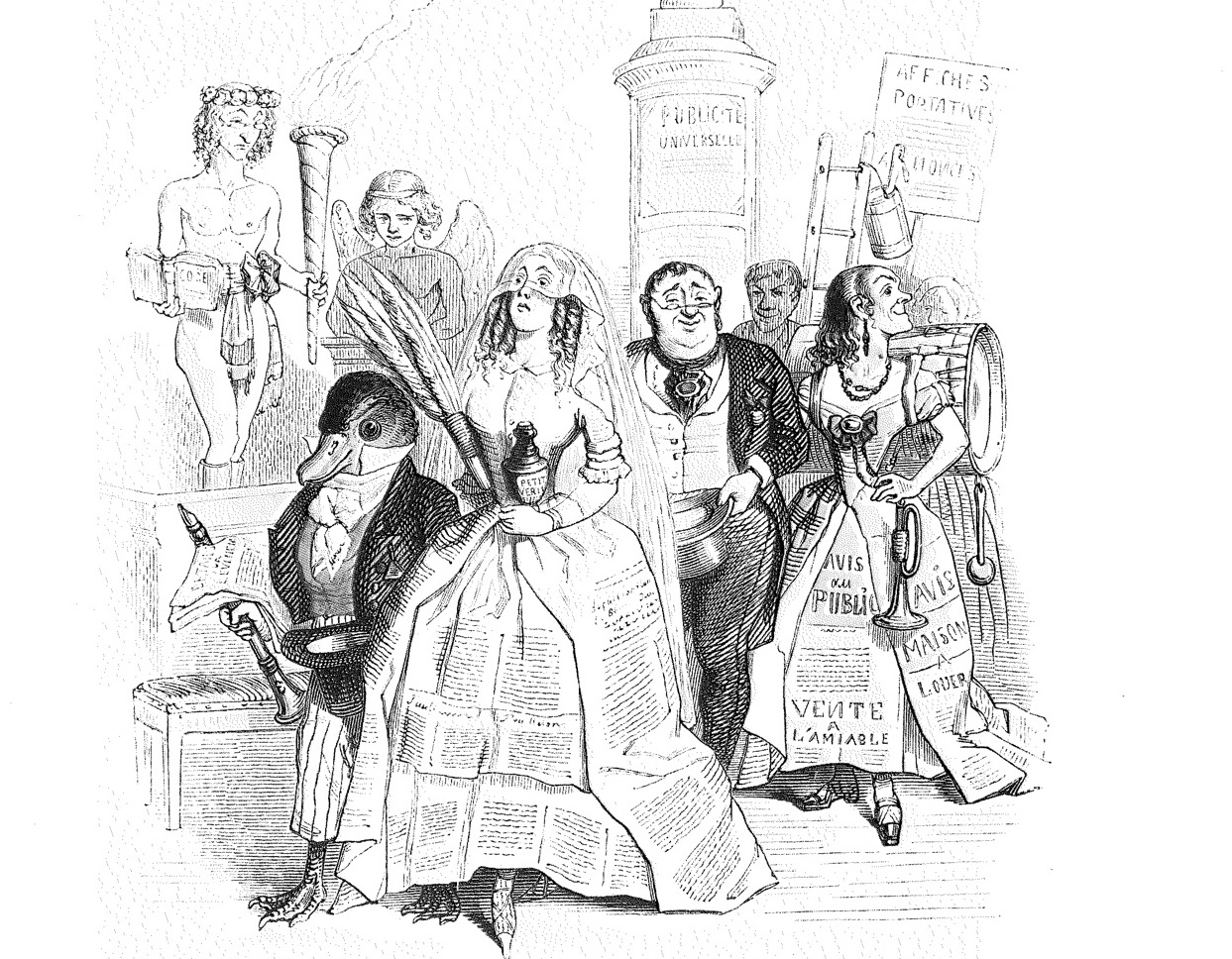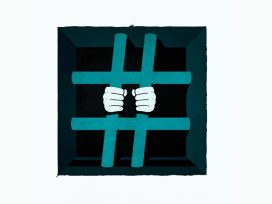All of a sudden, it was everywhere, the news story of unknown origin. The tasty morsel of information that you just had to share, forward, retell to your friends because it was so colourful, so deliciously funny and irresistible. Whether, before Donald Trump’s election as 58th thingamajig of the United States, we actually believed that all the tweets, posts and links that we received and forwarded because they were so amusing or unusual actually referred to real events, is an open question. Afterwards, however, they seemed like the portents of the confusion into which we were suddenly thrown. Were the funny-grotesque reports something else entirely, something much more serious? The entry tickets to a new type of disorientation and hyper-complexity, in which we no longer had to, or could, distinguish between true and false? Was frequency, acceleration, retweets, reposts, clicks and yet more clicks all that counted?
This, in any case, is more or less what has been written, blogged and printed of late. Oxford Dictionaries chose ‘post-truth’ as Word of the Year 2016 and George Orwell’s 1984 – ‘Ignorance is Strength!’ – topped the US bestseller lists. Social networks damaged democracy, proclaimed Canadian media sociologist Philip Howard, because bots – automatized user accounts programmed by professionals – produce content for fragmented publics and systematically dissolve the distinction between news and conspiracy theory. This was just one example: within a few weeks, ‘fake news’ became omnipresent in the media – even in Switzerland. In 2017 the Swiss Foundation for the History of Audiovisual Media held a conference entitled: ‘Fake news? Not in the Swiss press.’ In what sounded more like an advertising campaign for the Swiss press, it was possible to read that Swiss newspaper editors analysed current affairs, checked sources and provided background. ‘So that you can distinguish lies from facts.’ Yet again, the Swiss were in luck.
That’s what is reassuring about news about fake news: it not only guarantees users that they have found the right channel, the right website and the right print format that will impart to them the truth. But also, of course, that good old standards of truthfulness do still exist. Just as digitization retroactively turned all older texts, images and films into ‘analogue’ media, so talk of the disquieting new phenomenon that is of fake news evokes an ideal world post facto: a time when the news was still reliable, reporters were truthful and the distinction between fiction and reality was hard and fast – as with ‘analogue’ media, a reality generated retrospectively, one that was neatly ordered and easy to understand.
This reality is now lost forever, of course, but at least it used to exist. I wouldn’t underestimate the real comfort afforded by such a melancholy assessment. Simply because, for many media users, there seems to be little else. The fear of fake news as ‘the attack of the opinion robots’, as Howard put it, reproduces the cosy perceptual biotope of yesterday. Back then, when not everyone was on Twitter and Facebook, but… did what precisely?
1.
Let’s take a look back. When was the news actually reliable? The forged letter is apparently as old as the system of communications itself. The letter-writers of antiquity and late antiquity already used fairly refined techniques to guarantee the authenticity of the missive – through the litterae formatae for example, which involved a complex procedure where characters from the name of the sender, the receiver and the deliverer were encoded in the document and repeated at the end of the letter. Discreetly hiding messages in the text as proof of authenticity was common practice from the eleventh century onwards, as were secret scripts. In the Middle Ages, these letters were conveyed by salespeople, pilgrims and members of the clergy; with the widespread distribution of written documents from the fourteenth century onwards, cities and principalities created their own communications systems. In Florence, Venice and other Italian cities, special letterboxes were introduced at the same time. The so-called tamburi were intended exclusively for anonymous denunciations – a popular method for blackening the name of a fellow citizen, but also for complaining about corrupt officials. In a world where only written evidence was legally valid, writing and dispatching meant generating reality itself, and was equivalent to real political power.
The rapid increase in communications – city archives north of the Alps grew thirty times in size between 1430 and 1500 – took place in parallel with establishment of official messengers, in other words diplomats. They were at the same time exploratores, who discreetly gathered information for their governments back home (we would call them spies). Even more difficult to control, however, were the channels they used to send and receive information. Extant correspondence from the fifteenth century is full of references to the unreliability of the post and to lost and forged information. Nuremberg’s archives still contain the secret code used during the final decades of the fifteenth century for the exchange of information between the imperial city and its envoys. The urgent acquisition of news was referred to as a ‘hunting dog’, a lie or untruth was called a ‘fox’. Diplomats had a particular word for news that had been manipulated in order to mislead the opposition: a ‘monkey’.
The increasingly intense exchange of written communications at the end of the fifteenth and beginning of the sixteenth century turned information itself into a tool that could be deliberately used to mislead, like a weapon. ‘Little bubbles’ was what the Venetian chronicler and diarist Marino Sanudo called messages of uncertain origin, which he himself recorded obsessively, often dozens a week. Sanudo’s contemporaries had another word for this rapid acceleration of news: Praktick. The Medieval Latin word practica originally signified legal and medicinal procedures; in Italian, pratticare meant to negotiate or bargain, praticha meant procedure or instructions for use. At the end of the fifteenth and beginning of the sixteenth century, the term became a swearword in German. The city of Bern complained in 1507 of French diplomats who deceitfully distributed misleading information at speed (in geschwindigkeit practicierent). A pamphlet printed in 1513 in Strasbourg described practick as the Italian, principally Venetian, and French art of deception (incidentally, it also contained another new word: vinantz – speculative financial business). As with corruption and sodomy, these were considered to have come from the south, where ‘such things are practised everyday of the year’ (gepracticiert vil jar und tag). These evil and foreign acts of deception supposedly meant that one could no longer distinguish between true and false. Printed propaganda pamphlets about the election of Charles V in 1519 warned readers that the French wanted to influence the election through their ‘fast practices’ (geschwinden practicken). Reformers such as Luther and Melanchthon warned of the prackticken of the Catholics, whose intentionally misleading messages one should never trust. ‘I have affixed my seal to this letter’, complained Erasmus of Rotterdam in a text of 1535, ‘because some people have begun to imitate my handwriting so artfully that it is scarcely possible to discern the forgeries.’
This, then, was how contemporary commentators saw the transformation of media at the beginning of the modern era: increasing quantities and ever faster written communication, ever more and increasingly up-to-date pamphlets. In 1527, Martin Luther tried to teach believers about how to deal with the information overload. There are three kinds of news, he explained. The first came from the guardian angles, the second from God himself. Regrettably though, these were mixed up with the third, which came from Satan, the master of disguise and mimicry. Here, ‘things were turned upside down and [one] was none the wiser’ (es wust durcheinander gehe und [man] nichts unterschiedlich erkenen kann). How to distinguish the good from the demonic messages? Simple, wrote Luther. The devil doesn’t trust his own signs because God repeatedly foils his plans. Therefore the devil communicates and makes promises using ‘such loose words / that, whether what he says happens or not / he nonetheless wants it to be perceived as true’ (solchen wankelnden worten heraus / das es, so geschehe oder nicht / er dennoch war habe). It is his equivocal talk that gives him away.
News is literally a matter of faith – and not only in the sixteenth century. News, wrote literary scholar John Carey in 1989, equates to the religious rituals of the pre-modern period, in that it provides consumers with a temporary distraction form their everyday routines. People are given the illusion of having encountered events that are far greater, more authentic and more relevant than those in their own lives. Like religious tracts and sermons of previous centuries, news provided the reading public with a constant stream of dramatic stories that took place beyond the immediate horizons of perception and everyday life. Like the terrifying visions of pre-modern religion, news was comforting precisely when it reported on terrible events. The threat of these made the familiarity of one’s own everyday life that much more tangible and could be used to present one’s own group as potential victims.
2.
Two hundred years later, at the beginning of the nineteenth century, new printing techniques and cheaper paper triggered a media revolution. The newspaper era had dawned. Once again, not all contemporaries were impressed by the rapid increase in information. ‘Daily criticisms in fifty different places’, remarked Johann Wolfgang von Goethe severely in 1824, merely generated ‘a sort of half culture of the masses’; for the more talented, they constituted ‘a noxious mist, a descending poison’. Goethe called the new media ‘velociferous’: owing to their devilish speed, distinguishing between true and false no longer seemed possible. Yet this did not hinder newspapers’ success: ninety years later, at the outbreak of the First World War, more than 10,700 of them appeared in the German Empire alone, with an overall circulation of around five billion copies a year. England, France and the United States had even higher circulations. Was everything published in these newspapers true and reliable?
Google’s Ngram Viewer promises to give users, using a secret algorithm, the frequency of any concept in digitized English-language texts published between 1800 and 2000. Enter ‘fake news’ and you get an interesting curve that, after some undulations in 1810 (Goethe’s concerns?), 1850 and 1900, ascends sharply with the First World War. It dips a little around 1920 and then, at the beginning of the 1930s, rises dramatically, hitting an absolute high in 1939, only to quickly dip again soon after. Between 1950 and 1960, the concept was used with roughly the same frequency as at the beginning of the First World War. After 1990, it gently rises, but without reaching more than a third of the highest figures from around the outbreak of the Second World War.
In 1938, shortly before the peak of Google’s ‘fake news’ curve, Evelyn Waugh’s novel Scoop was published. A somewhat dreamy poet is mistaken for a distantly related writer with the same surname and dispatched by a major British newspaper to the exotic country of Ishmaelia as a war reporter. Along the way, the poet listens to an account of the work of his colleague Wenlock Jakes:
‘Gets a thousand dollars a week. When he turns up in a place you can bet your life that as long as he’s there it’ll be the news centre of the world.
‘Why, once Jakes went out to cover a revolution in one of the Balkan capitals. He overslept in his carriage, woke up at the wrong station, didn’t know any different, got out, went straight to a hotel, and cabled off a thousand word story about barricades in the streets, flaming churches, machine guns answering the rattle of his typewriter as he wrote, a dead child, like a broken doll, spreadeagled in the deserted roadway below his window – you know.
‘Well they were pretty surprised at his office, getting a story like that from the wrong country, but they trusted Jakes and splashed it in six national newspapers. That day every special in Europe got orders to rush to the new revolution. They arrived in shoals. Everything seemed quiet enough but it was as much as their jobs were worth to say so, with Jakes filing a thousand words of blood and thunder a day. So they chimed in too. Government stocks dropped, financial panic, state of emergency declared, army mobilized, famine, mutiny and in less than a week there was an honest to God revolution under way, just as Jakes said. There’s the power of the Press for you […]’
The wars of the twentieth century were news wars. Contemporaries of the heyday of the mass press during the First and Second World Wars had many reasons to reflect upon fake news. The Germans’ use of a special machine for industrially processing horse carcasses on the battlefields of World War One inspired English war reporters to report in 1917 that the enemy was manufacturing soap and glycerine from the corpses of fallen soldiers. It was only in 1925 that the British government admitted that the story had been invented. The story may sound familiar – but from where? When the secret murder of Jews began with Operation Reinhardt in Poland in spring 1942, rumours were already circulating that people being resettled in the East were being murdered and turned into soap. In the first reports about the Holocaust that reached the USA that autumn, there was mention of Jewish children being processed to make soap, glue and fertilizer: ‘Part of the history of the reception of the soap legend’, writes Joachim Neander in his 2005 study of the modern myth of soap made from Judenfett (‘the fat of Jews’), ‘is that it contributed to the allies first becoming aware of the Holocaust when it was already too late to intervene’. After all, the motif was already known to the Allies from World War One propaganda.
In late 1942, no one on the other side of the Atlantic could have imagined that the story of turning human bodies into soap was the distorted echo of a far more appalling, real industrial act of annihilation, the attempt to express indescribable violence through a familiar narrative trope. After the end of the war, the myth of soap made from the dead was all the more widely disseminated. ‘They manufacture soap from the bodies’, says the narrator in Alain Resnais’ 1955 film about the concentration camps Nuit et brouillard, ‘from the skin…’ The voice breaks off. Einheitsseife (‘standard soap’) – manufactured by the German military administration up to 1945 and stamped with the acronym RIF for ‘Reich Department for Industrial Fat’– had a busy afterlife in museums and Holocaust memorials, where until early this century it was displayed to horrified visitors as ‘soap made from the fat of Jews’.
3.
The Daily Beast, the name of the tabloid in Waugh’s novel, meanwhile actually exists as an online news platform in the US. It certainly looks as if the history of news has always been about the impossibility of distinguishing between the real and the fake, in view of the ever greater acceleration of information – with a lead role being played by that master of disguise, inversion and simulation, the devil himself, who from Luther to Goethe (and Evelyn Waugh) had unfailingly turned up in reflections on media and truth. The medieval historian may suspect that invocations of the demonic are present in more recent discussions about the technical possibilities of the media. Klaus Honnef, writing in the catalogue accompanying an exhibition entitled Blow Up in 1987, was convinced that the distinction between reality and fiction had finally been dissolved. The contemporary flood of images, particularly in commercial advertising, he argued, manipulated, deceived and overwhelmed the viewer.
From the outset, the news as commodity of the newspaper had a successful doppelganger in the form of advertising – not only paid advertisements that were clearly marked as such, but also réclame disguised as news. In a colour woodcut of 1844, the Parisian caricaturist Grandville satirized the relationship between the mass press and surreptitious marketing as an indecent but profitable marriage. The newspaper was caricatured as a canard, a duck – an expression for false reports that remained current until well into the twentieth century. In the background is one of the oldest symbols of the new advertising medium that still remain: the Litfaßsäule or advertising column. Originally, these were adorned exclusively with printed advertisements without pictures, which only came forty years later with new technologies of reproduction.

‘Les Noces du Puff et de le Réclame’, colour woodcut of 1844 by the Parisian caricaturist Grandville.
The advertisement is the media’s unconscious: its soft underbelly, its obscene reverse, implying economic dependence. ‘Fake news? Not in the Swiss press’. However, what the Neuen Zürcher Zeitung and Zurich Tages-Anzeiger presented as news in April 2017 was itself an advertisement placed between ads promoting culture and cabaret, not to mention classifieds conveying, of course, nothing but the truth: ‘Steamy sessions with beautiful Latinas, Lilly 18, Kim 25’ and ‘Private & exclusive, Swiss lady spoils the gentleman’.
Advertising always tells the truth, though less about the products it sells than the channels it uses. In the nineteenth century, it was advertising revenue that made the new media cheap and thus mass-marketable – a fact that strikes the internet user of the twenty-first century as strangely familiar. The conclusion may be simple: reliable information comes at a price. If it comes very cheaply or for free, then someone else has already discreetly paid for it. Talk of the demonic powers of manipulation, simulation and deception that are supposedly inherent to the medium may simply be a way of avoiding the subject of money.
4.
But what is so bad about lying? ‘Nature’, wrote Immanuel Kant in his Anthropology from a Pragmatic Point of View, has ‘wisely implanted in man the tendency to allow himself to be deceived’. ‘Good, honourable decorum’, continues the philosopher drily, is merely ‘an external illusion’, and ‘everything that is called propriety … is of the same sort’ – which is to say simulation, fibbing. The philosopher David Nyberg formulated this a little more positively two hundred years later, in 1996. He argued that conscious manipulation is one of our key skills when it comes to organizing the world, coordinating with those who think otherwise, and coping with insecurity and pain. Recently, the Zurich-based educationalist Roland Reichenbach attested to how the education sector as a whole rests upon mutual deception, on systematic dishonesty, and that this is in the best interests of teachers and students.
Entertainment media are particularly proud of their ‘special effects’ – their ability to make users believe in fiction. This applies not only to literature, film and television. In his 1983 book The Media Monopoly, Ben Bagdikian revealed that fifty corporations controlled the entire western media industry; by the time the fourth edition was published ten years later, it was fewer than twenty. Now they can be counted on the fingers of one hand. The result is closed circuits and cross marketing, thematic reduction and endless repetition of what the public already knows, thus ensuring reliably high viewing figures and steady advertising revenues. This is what the film director Peter Watkins, in his 2003 book entitled Media Crisis, calls ‘monoform’. What appears to be news must be able to generate familiar anxieties: hence, all the super villains, murder plots and ominous visions of the future, with which every news channel confirms its own importance. At the same time, they are intended to exorcise a completely different, unutterable ennui – that of viewer’s weariness of their everyday life and own body.
It helps, of course, to check your Facebook account. The smartphone as communication device carried around permanently by its user fulfils of one of the media industry’s greatest dreams. The ‘off’ button has finally been abolished: everyone is always online everywhere. Half the time spent on the Internet is wasted. The trouble is, you don’t know which half. That is of course a slight misquotation: it was David Ogilvy who made the original apercu in 1963 about advertising.
But the internet is advertising – and probably the most impressive example in the last twenty years of advertising’s ability to penetrate and shape every new public space. It promises to do away with all the costs of acquiring information; all you need is the right machine and to be on the right platform. Seen like this, social networks are a perpetual feedback loop of desire. The promise they make – to be connected with everyone, but always to be secure in one’s own group; to be outwardly influential and infinitely duplicated, but to be always at home – this promise is so adaptable, so nebulous and polymorphous that it can never be falsified. Even if it is a bit of a lie.
5.
For all their wonderful qualities, social media constitute a space of attention-seeking shared with many others. This makes for better-informed individuals, however doesn’t diminish the hypnotic effect that successful attention diversion has on a collective of viewer-users. As with magic tricks, the crucial action happens not behind the scenes but in full view – only we do not look. It is not about being invisible (this would itself convey a clear message, namely darkness, no signal, ‘you see nothing’), but about diversion, distraction and advertising. Huge amounts of advertising. According to one successful industry insider, in 2012 at least 40 per cent of the information circulating in blogs and social networks came not from private individuals but from companies. The title of his book is Trust Me, I’m Lying: Confessions of a Media Manipulator.
Perhaps all the excitement about ‘fake news’ is in fact good news. After the internet fantasies of the 1990s, where interconnection and uninterrupted online presence were hailed as the route to political liberation, self-organization and social formation, the current panic over the threatening power of simulation reminds us that collective perception also has its dark side. Above all when it’s free.
And so we end up back in Switzerland. On 26 April 2017, a considerable number of people chose not to believe the newspaper publishers when they said that the news was in good hands. Nor did they want something for free. On the contrary, they paid a million Swiss franks within 12 hours to start an ad-free online magazine, whose initiators knew little more about than the name. Of course, it came from the past. You guessed it: Republik.
The next Sunday, the Neue Zürcher Zeitung, busily searching for the truth, compared the founders of the project with the supporters of Donald Trump. There he is again, the devil, that great manipulator. It has been a while since he was needed so urgently.
This article is part of the focal point ‘Disinformation and Democracy’, which will be launched in Eurozine at the end of September. The German original will be published in Wespennest on 7 November.








